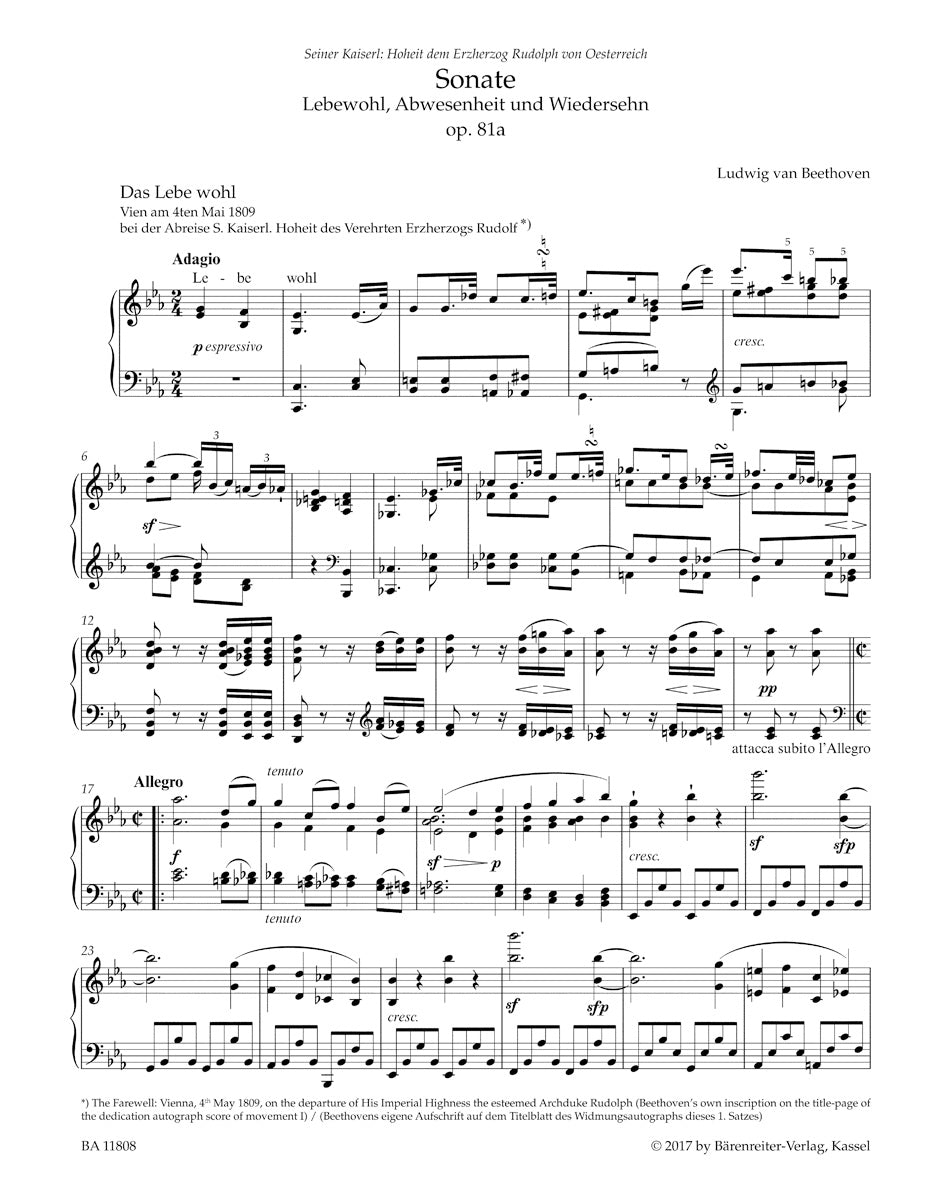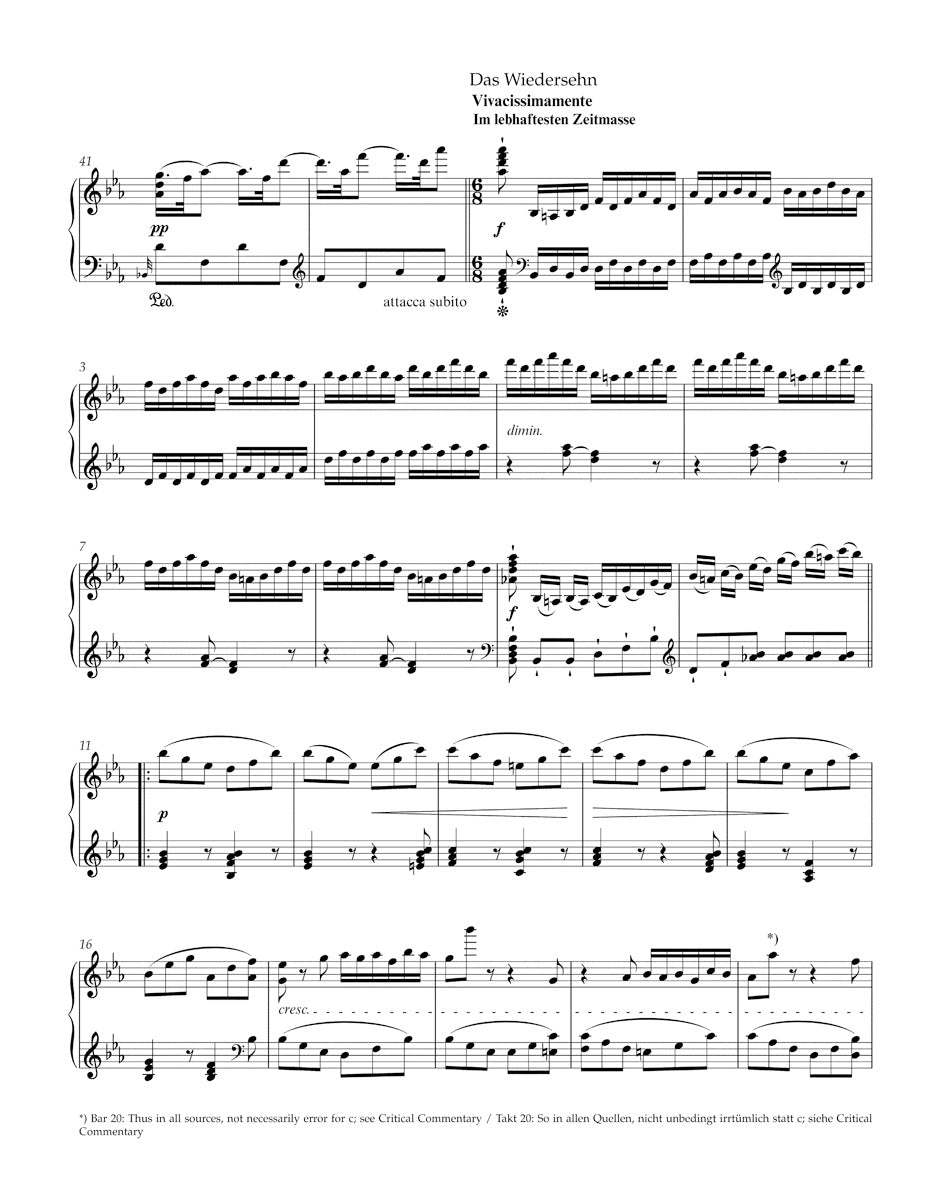


BARENREITER - 345062
Beethoven Sonata for Pianoforte E-flat major op. 81a "Les Adieux" (Lebewohl, Abwesenheit und Wiedersehn)
Composer: Ludwig van Beethoven
Publisher: Bärenreiter
Instrumentation: Piano
Binding: Stapled
Dimensions: 12.2 in x 9.6 in
Pages: 26
Beethoven Sonata for Pianoforte E-flat major op. 81a "Les Adieux" (Lebewohl, Abwesenheit und Wiedersehn)
Juilliard Store
144 West 66th Street
New York NY 10023
United States
Choose options

Beethoven Sonata for Pianoforte E-flat major op. 81a "Les Adieux" (Lebewohl, Abwesenheit und Wiedersehn)
Juilliard Store
144 West 66th Street
New York NY 10023
United States
Beethoven Sonata for Pianoforte E-flat major op. 81a "Les Adieux" (Lebewohl, Abwesenheit und Wiedersehn)
Juilliard Store
144 West 66th Street
New York NY 10023
United States
Editor: Del Mar, Jonathan
Orchestral scoring : piano
Product format: Performance score, Urtext edition
Binding: Stapled
Pages / Format: XVII, 26 - 31,0 x 24,3 cm
Beethoven referred to op. 81a as a “characteristic sonata”, not in the sense that it had an underlying programme, but because it lent musical expression to his feelings. He reacted angrily when his publisher printed French translations of its title and movement headings. This however did not prevent op. 81a from becoming widely known by its French name “Les Adieux”. Jonathan Del Mar, worldwide authority for Beethoven’s instrumental music, offers a reliable musical text on the basis of the most recent research. The editorial principles are clearly laid out in the Critical Commentary. The elegant engraving meets the performer‘s needs. Specifically, in the Bärenreiter Urtext edition there is no longer disruptive page turning between the slow second movement and the „attacca subito“ of the following Vivacissimamente. The publication is rounded off by helpful comments on important issues of historical performance practice and by an informative Introduction.
